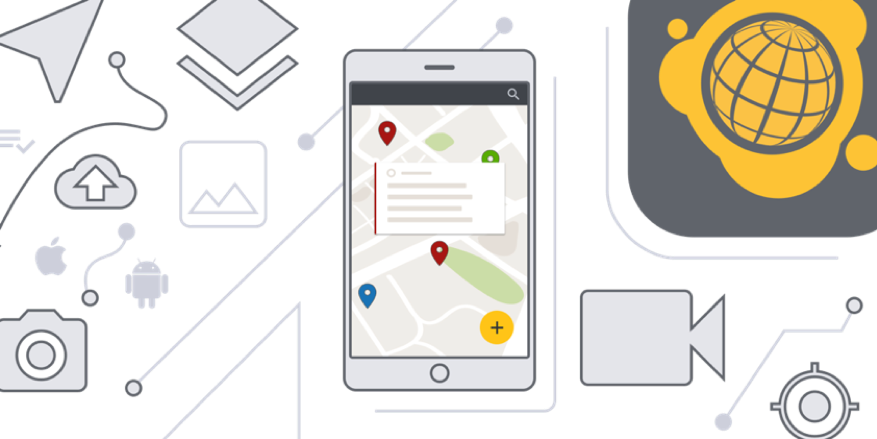
Ushahidi is at an important inflection point. This year marks our 10th birthday, and we’re extremely proud of the impact we’ve made over the past decade in solving problems for marginalized communities. At the same time, we know that challenges in the worlds of technology, humanitarian aid, and democracy are evolving at an unprecedented rate. How do we, as a mission-focused technology organization, ensure that we're constantly innovating to best serve people in need?
Our answer is two-fold, and it’s reflected in two major decisions we made recently regarding our own product development strategy. First, we doubled-down on strengthening and stabilizing Ushahidi’s flagship platform, which included adding more support for our open-source developer community. We’re excited to share our progress in this area and will be writing more about open-source over the next few months.
Our second move was to ask ourselves, “Aside from everything we’ve been building upon since 2008, what more can we build in 2018 to help disadvantaged people raise their voices and get the support they need?” If we were trying to solve the initial problem Ushahidi was built to solve today, what is happening on the ground and how do we help disadvantaged people get the help they need, what would we build?” This led to a new product development initiative where we regularly source, assess, prototype, and validate new product ideas to advance our core mission. We call this our Product Discovery process.
A key part of Product Discovery is getting into the habit of generating and sharing ideas on a regular basis. Ideation is a muscle, and it needs to be exercised frequently to grow stronger. To do this, we created a simple three-question survey that goes out to the whole organization every week, soliciting new ideas:
1) What’s the problem and how does this prototype solve it?
2) Who are the users/partners 2 weeks from now, 2 years from now?
3) What’s the most efficient way of validating/devalidating this solution?
We do two things with the results. First, we make all ideas viewable to the entire organization and discuss at our Weekly All Hands call, which sparks discussion and spawn new ideas for the following week.
Second, we also created two small, multidisciplinary teams called “Protocircles”, which are tasked with rapidly prototyping and validating the most promising of these ideas. To determine which ideas move to the prototype phase, we have representatives from key parts of the org assign numerical ratings based on one of these subject matter areas:
- User Engagement Assessment: "Is the use case central to our mission? Do we think we can get user adoption on this? What is our level of access to the target user base in the near-term?"
- Product Assessment: "How unique/novel does this feel? Is our design/user-facing/nontechnical team well-positioned unlock this space?"
- Engineering Assessment: "Is this exciting or intriguing from a technical standpoint, how well-positioned is our engineering team to successully build toward this vision?""
- Fundraising Assessment: "Can we get funding for this?
- Business Assessment : "Can we eventually build a mission-focused business around this?”
The Protocircle teams then begin prototyping the two highest ranked ideas, following this timeline:
- One week for research, scoping, and wireframing
- Two weeks to get to an “Internal Alpha” product that we can give to our own team to test and use
- Two weeks to get to a “Closed Beta” product
How do our Protocircles move from “zero to Beta” so quickly? The key is in how we staff these teams--we keep them very small, with one Engineer, one Designer, one Product Manager/User Researcher each. This helps give them a high degree of autonomy to self-direct and move swiftly. We also have two Protocircles, which allows us to test two completely different ideas simultaneously. We’ll be writing more about how we’ve gotten creative with our resourcing and team structure, as it’s an area in which we’ve learned and experimented a ton, and seen great improvements this year.
As these Protocircles move from the wireframe, to Alpha, to Beta phases, our organization provides them constant support in the form of feedback (multiple demos are given per week) and accountability (making sure we are keeping our efforts nimble and experimental in nature). If these prototypes start to get validation in the form of external community interest, usage, or investment--in other words, if they start to prove they can positively impact our core mission--then we invest in them further. If we struggle to get validation, we treat it as a valuable learning experiment, wind down the project quickly, and then that Protocircle takes up the next highest rank idea from the Discovery Backlog.
Regardless of the outcome of each experiment, these Discovery efforts have continually proven to be valuable investments for our organization-- we learn about new problems facing marginalized communities, deepen our understanding of communities, and level-up our technical skills in new areas. In some cases, we’ve actually hit on some ideas that we’ve decided to invest in further and develop as products.
We’ll be telling you all about the ideas and problem statements we are coming up with and prototyping each week here on the blog. We’ll also be sharing more about what we’ve learned as a team as we’ve implemented our Discovery process, which we believe is useful for other creative, mission-focused organizations. We also welcome your ideas via Twitter or our Slack/IRC channels.